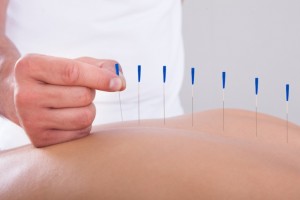Therapies that Complement Lung Cancer Treatment
5 Alternative Therapies That Complement Lung Cancer Treatment
Alternative therapies are popular — according to the 2007 National Health Interview Survey, four in 10 American adults reported using some form of alternative or complementary therapy within the year prior to the survey. The most popular treatments were deep breathing exercises and natural products, but other popular alternative therapies include acupuncture, massage, meditation and yoga.
Can alternative and complementary therapies help with lung cancer treatment? They can, but it’s important to realize that alternative therapies alone may not be as effective as traditional cancer treatments like radiation, chemotherapy, and surgery. Nevertheless, many patients fighting lung and other cancers choose alternative therapies to help them manage pain, stress, and cancer treatment side effects.
Make sure you discuss any alternative therapies you may be considering with your treatment team before you get them. Some therapies may not be appropriate for all patients, or can interfere with your treatment. Alternative therapies like the ones discussed below can be a beneficial part of your comprehensive treatment plan, and help you get the most out of lung cancer treatment.
1. Yoga
Yoga is a form of strength training exercise that involves physical postures and breathing exercises. It is a meditative practice that has been found to promote relaxation and increase physical fitness. It may help you sleep better, and if you’re trying to quit smoking, yoga may help you learn to manage cigarette cravings. Yoga may help to relieve symptoms of physical pain and can help you manage cancer treatment side effects. In recent studies of cancer survivors, yoga has been found to greatly improve quality of life.
If you have never done yoga before, you should take classes from a qualified instructor. You can also practice yoga poses at home on your own.
 2. Acupuncture
2. Acupuncture
Acupuncture is a form of traditional Chinese medicine that involves inserting needles into acupuncture points on the skin, or applying heat, pressure, or other stimulation to those points. Acupuncture during lung cancer treatment can help relieve chemotherapy symptoms, including vomiting and nausea, and ease pain associated with cancer. You should receive acupuncture from a licensed practitioner who uses new, disposable needles for each session. If you are taking blood thinners or have low blood counts, you shouldn’t have acupuncture.
3. Hypnosis
Hypnosis has a number of applications for use in cancer treatment. Not only can it help you learn to manage pain, it can also help you come to terms with psychological symptoms like anger, anxiety, frustration, guilt, depression, and fear of death. You can use hypnosis to help you deal with cancer treatment side effects like nausea. You can receive hypnosis from a psychotherapist or other professional, or learn self-hypnosis.
 4. Massage
4. Massage
Research into the benefits of massage for cancer treatment show that it can relieve anxiety, stress, pain, fatigue, and depression. It can enhance feelings of well-being, promote relaxation, relieve stiffness, and enhance mobility. You may want to look for a massage therapist who specializes in helping cancer patients. You shouldn’t have massage if you’re taking blood thinners or if you’re suffering from low blood counts.
5. Meditation
Meditation is a practice in which you use self-reflection or mental concentration to calm the mind and relax physically. It can help you cope with sleep problems and chronic pain brought on by cancer treatment. It may also relieve anxiety and stress while improving immune function and mood. There are many forms of meditation. Free guided meditations are available online and in many communities.
Alternative therapies can be a powerful complement to traditional cancer treatments. They can help you cope with the psychological, emotional, and physical side effects of cancer treatment. Like many cancer patients, you may find these therapies so valuable that you continue to include them in your daily life, even after cancer treatment is complete.
